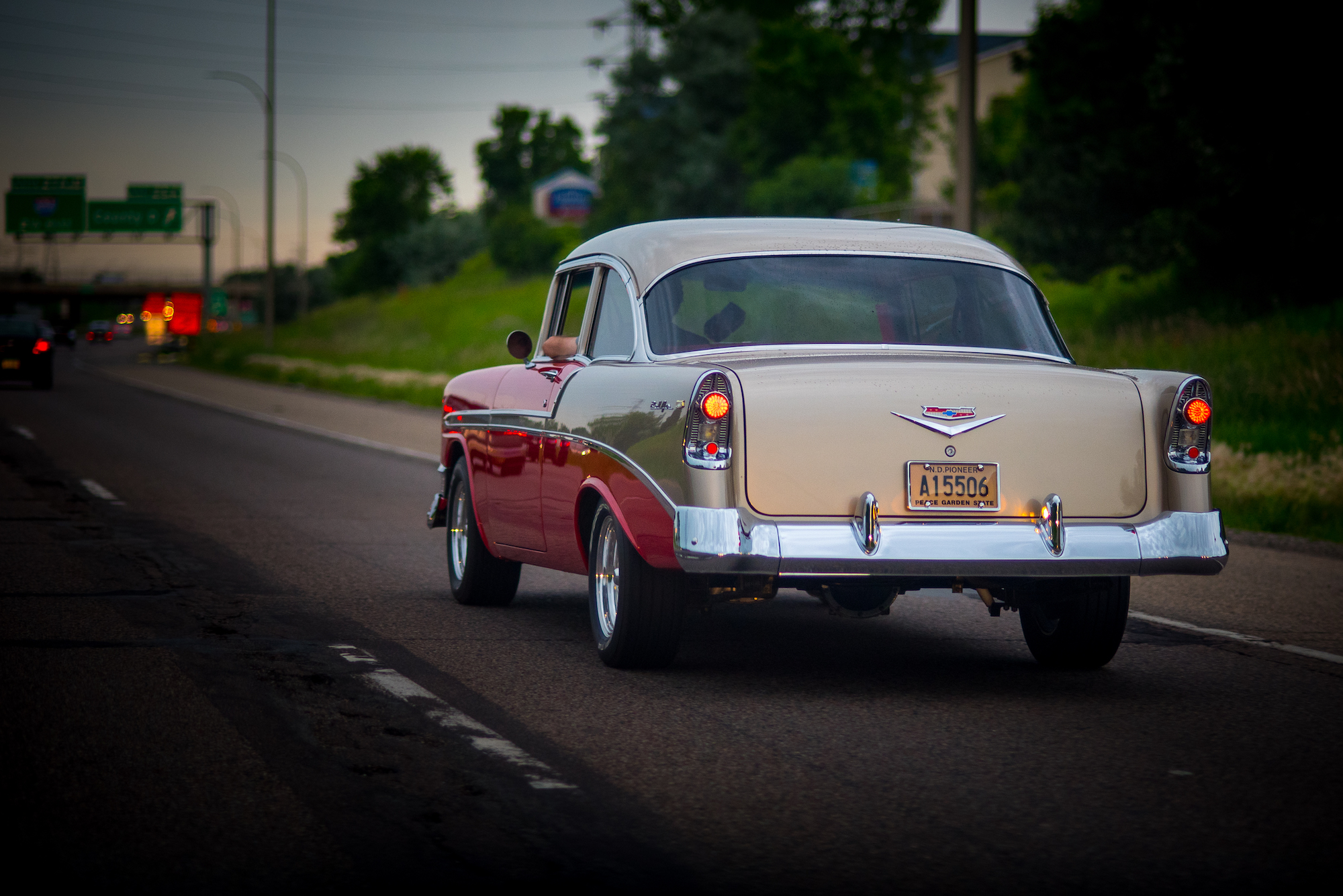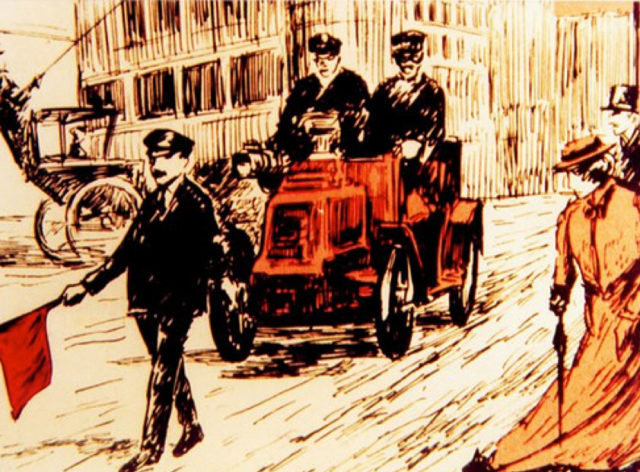
Learning from the Past, Preparing for the Future
July 7, 2014 — Blog
The automobile industry is in its infancy as the first horseless powered cars start appearing on city streets. By far one of the biggest revolutions of the last century, this marks a drastic change people’s mobility. However, like any other revolution, it faced a series of reactions. One of these reactions was the “Red Flag Act” introduced by the British government. The act required all mechanically powered road vehicles to have three drivers, be limited to four miles per hour on the open road and two miles per hour in town centers, and finally to be preceded by a man on foot waving a red flag at all times as public warning. The following image illustrates what a strange sight this must have been.

Unfortunately, this act considerably slowed down the development of the automobile industry in the UK for more than 30 years. It was finally abolished under pressure of the future King Edward VII, keen to drive an automobile himself. Today, a new revolution is taking place. Again, it involves urban mobility. Djump is part of this new revolution.
At Djump we think that the automobile can bring people closer.
For years, the automobile remained a symbol and a vector of individualism. At Djump, we think that the automobile can bring people closer, not just by driving them to their destination, but allowing them to share their views, friendships and of course a ride. Through our app, we connect people who dream of a more sustainable, collaborative and enjoyable way of getting around. This collaboration is made possible by the revolution in communication, best exemplified by the smartphone, which allows us to connect instantly with the rest of the world with a single tap. We connect thousands of people on a weekly basis in Brussels and Paris through their smartphones so they can share rides. It really shows that today we don’t need to own something to enjoy the use of it – and we see this tendency in numerous sectors.

Yet today’s technology will soon be obsolete. In a very near future, your car itself will allow you to connect with the rest of the world. We believe that this car connectivity will be the last barrier for a mass adoption by the market of the ride-sharing idea. At the end of the year, five car brands will integrate the Apple CarPlay system, which claims to allow drivers to use the iPhone easily and more safely. In 2015, an additional 15 will follow suit. The connected car market is expected to reach an enormous $98.42 billion by 2018. Djump intends to be at the forefront of the transition from the smartphone in your pocket to the complete integration in your car. You will be able to pick up someone you know, on your route, with a perfect synchronism, without having to think about it. In terms of ride sharing and transportation, Djump and other acolytes are building the fully decentralized transport network of the future. Our main obstacle for this decentralization still remains the 100% car ownership paradigm. But we are convinced this decentralized transport network, composed of people like you and me, will shift paradigm rendering single-use ownership a rarity rather than norm. While we can see the evident signs of this happening today, there is still a long road ahead.
The question for the cities now is this: do we encourage this revolution?
Cities also have to realize that a unique, centralized transport network composed of bus, trams and subways is no longer sufficient – as demonstrated by the increase in congestion on our roads. We also know that today’s transport revolution will trigger new regulations. The question for the cities now is this: do we encourage this revolution, or whether, like the 1865 “Red Flag Act”, do we delay it from happening. In the meantime, enjoy the ride!